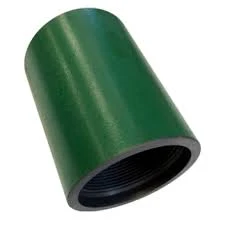- Afrikaans
- Albanian
- Amharic
- Arabic
- Armenian
- Azerbaijani
- Basque
- Belarusian
- Bengali
- Bosnian
- Bulgarian
- Catalan
- Cebuano
- Corsican
- Croatian
- Czech
- Danish
- Dutch
- English
- Esperanto
- Estonian
- Finnish
- French
- Frisian
- Galician
- Georgian
- German
- Greek
- Gujarati
- Haitian Creole
- hausa
- hawaiian
- Hebrew
- Hindi
- Miao
- Hungarian
- Icelandic
- igbo
- Indonesian
- irish
- Italian
- Japanese
- Javanese
- Kannada
- kazakh
- Khmer
- Rwandese
- Korean
- Kurdish
- Kyrgyz
- Lao
- Latin
- Latvian
- Lithuanian
- Luxembourgish
- Macedonian
- Malgashi
- Malay
- Malayalam
- Maltese
- Maori
- Marathi
- Mongolian
- Myanmar
- Nepali
- Norwegian
- Norwegian
- Occitan
- Pashto
- Persian
- Polish
- Portuguese
- Punjabi
- Romanian
- Russian
- Samoan
- Scottish Gaelic
- Serbian
- Sesotho
- Shona
- Sindhi
- Sinhala
- Slovak
- Slovenian
- Somali
- Spanish
- Sundanese
- Swahili
- Swedish
- Tagalog
- Tajik
- Tamil
- Tatar
- Telugu
- Thai
- Turkish
- Turkmen
- Ukrainian
- Urdu
- Uighur
- Uzbek
- Vietnamese
- Welsh
- Bantu
- Yiddish
- Yoruba
- Zulu
Durable Stainless Steel Hose Connectors for Reliable Fluid Transfer Solutions
Understanding Stainless Steel Hose Couplings A Comprehensive Overview
In various industrial applications, effective fluid transfer is crucial for operational efficiency. One of the key components in facilitating this process is the hose coupling. Among the various materials available for hose couplings, stainless steel has emerged as a preferred choice due to its exceptional properties. This article will delve into the features, advantages, applications, and maintenance of stainless steel hose couplings.
What are Hose Couplings?
Hose couplings are devices used to connect hoses to one another or to fittings across different systems. They ensure a secure, leak-free connection, which is fundamental in applications ranging from agriculture and construction to food processing and chemical handling. Couplings can be categorized into various types, including quick connects, cam locks, and threaded fittings, each designed for specific uses and pressure standards.
The Importance of Stainless Steel
Stainless steel is an alloy that primarily combines iron with a minimum of 10.5% chromium. This composition imparts resistance to corrosion, oxidation, and staining, making it ideal for challenging environments. When it comes to hose couplings, stainless steel provides both strength and durability, which are essential for maintaining operational integrity in high-pressure and dynamic systems.
Key Features of Stainless Steel Hose Couplings
1. Corrosion Resistance One of the most significant benefits of stainless steel hose couplings is their ability to resist corrosion. This is particularly vital in industries where exposure to harsh chemicals, moisture, or saline environments is common.
2. Durability Stainless steel hose couplings are engineered to withstand high pressures and extreme temperatures. Their robust construction prevents deformation and ensures longevity.
3. Hygiene In industries such as food processing, pharmaceuticals, and beverages, maintaining hygiene is critical. Stainless steel, being non-porous, is easier to clean and sanitize compared to other materials, reducing the risk of contamination.
stainless steel hose couplings

Advantages of Using Stainless Steel Hose Couplings
When it comes to choosing hose couplings, the advantages of stainless steel cannot be understated
- Longevity The durability of stainless steel means that hose couplings can last for years, leading to lower replacement costs over time. - Safety The reliability of stainless steel under pressure reduces the risk of leaks and failures, which can be hazardous in industrial settings. - Reduced Maintenance Though stainless steel does require some upkeep, its resistance to corrosion means that maintenance is generally less frequent compared to other materials like plastic or aluminum. - Aesthetic Appeal Stainless steel couplings can provide a visually appealing finish that retains its appearance better over time, which can be important for on-site presentations.
Applications of Stainless Steel Hose Couplings
Stainless steel hose couplings are ubiquitous across numerous industries. Some common applications include
1. Food and Beverage Processing Used in transfer applications, these couplings ensure sanitary and safe transportation of liquids. 2. Chemical Processing Chemicals often require secure connections to prevent spillage or accidents, making stainless steel an ideal material. 3. Marine and Offshore Stainless steel’s resistance to saltwater corrosion makes it suitable for marine environments, where traditional materials might fail quickly. 4. Agriculture In irrigation and spraying systems, durability and resistance to environmental factors are essential, making stainless steel a favorable choice.
Maintenance Tips
To ensure the longevity and proper functioning of stainless steel hose couplings, consider the following maintenance tips
- Regular Inspections Routinely check couplings for wear, damage, or corrosion, especially in high-stress environments. - Cleaning Keep couplings clean and free from debris and contaminants, which can interfere with their operation. - Proper Storage If couplings are not in use, store them in a dry place to prevent environmental factors from causing damage.
Conclusion
Stainless steel hose couplings play a vital role in maintaining the integrity and efficiency of fluid transfer systems across various industries. Their superior properties, including corrosion resistance, durability, and hygiene, make them an excellent choice for both industrial and commercial applications. By understanding their features and maintaining them properly, industries can enhance their operational efficiency and safety. Investing in quality stainless steel hose couplings is not just a practical choice; it’s a strategic decision that can lead to significant long-term benefits.
-
Tubing Pup Joints: Essential Components for Oil and Gas OperationsNewsJul.10,2025
-
Pup Joints: Essential Components for Reliable Drilling OperationsNewsJul.10,2025
-
Pipe Couplings: Connecting Your World EfficientlyNewsJul.10,2025
-
Mastering Oilfield Operations with Quality Tubing and CasingNewsJul.10,2025
-
High-Quality Casing Couplings for Every NeedNewsJul.10,2025
-
Boost Your Drilling Efficiency with Premium Crossover Tools & Seating NipplesNewsJul.10,2025







